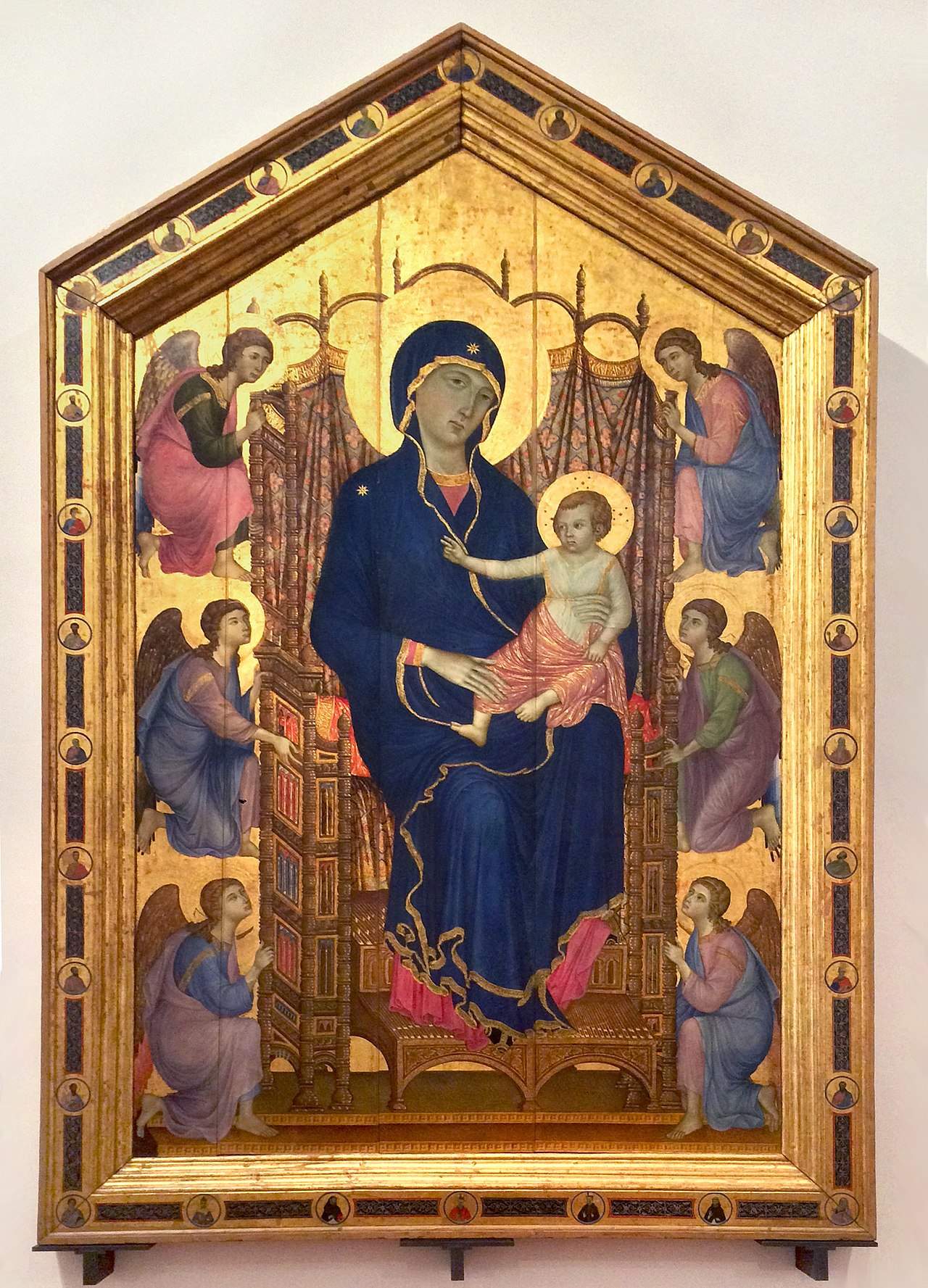Return the altarpieces that are now in museums to the churches for which they were painted, even if they are masterpieces? The proposal comes from Uffizi director Eike Schmidt, who stresses the desirability of returning Duccio di Buoninsegna’s Rucellai Altarpiece to the basilica of Santa Maria Novella, hoping that a debate will be opened on this proposal.
I think the time has come, Schmidt said this morning on the sidelines of the reopening of Palazzo Pitti to the public. State museums take an act of courage and return paintings to the churches for which they were originally created. In many state museums there are panels, canvases, altarpieces and other paintings designed and made for churches or chapels. And since Italy distinguishes itself from other countries by spreading the heritage of cultural goods throughout the territory, a historical reunion (where possible) will restore value to artworks and places. The most concrete way to restore the principle of the diffuse museum (according to Antonio Paolucci’s felicitous expression) is for state museums to begin to bring back to sacred places the paintings that were created for them: in their original location they would regain the right architectural-spatial context and relationship with other works of art, with a virtuous valorization from a historical and artistic point of view.
According to Schmidt, “the recontextualized works would regain their original spiritual meaning, the meaning that had determined their creation in the first place. In the case of Florence, I am not talking about works acquired over the centuries by the Medici and Lorraine families, often for very substantial sums of money, and placed in very specific collector contexts, but about altarpieces that from churches often ended up in museum storage, or that in museums were transported only temporarily and then remained there without any transfer of official ownership. It is obvious that for a return, security conditions (anti-theft, anti-vandalism and climatic, environmental) must first be guaranteed.”
Perhaps the most important case of a masterpiece taken out of its original context, Schmidt points out, “is in the Uffizi itself: the Rucellai Altarpiece by Duccio di Buoninsegna, which in 1948 was removed from the basilica of Santa Maria Novella and since the 1950s has been displayed in the Michelucci and Scarpa room, along with the Majesties of Giotto and Cimabue. It has never become part of the museum’s holdings.”
Regarding the Rucellai Altarpiece, Schmidt says that “certainly at the Uffizi this monumental painting offers the possibility of a stylistic comparison with the two altarpieces by Cimabue and Giotto, but its absence from Santa Maria Novella takes away an essential part of its history and its overall meaning. I hope for a wide-ranging, open, public and unprejudiced debate on the advisability of returning the work to the basilica of Santa Maria Novella for which it was conceived and painted (and not of placing it a phantom and expensive new museum, as has been proposed: then it might as well be left at the Uffizi).”
This proposal, the Uffizi director concludes, was already rightly put forward in the 1990s by Giorgio Bonsanti, and it is sacrosanct to put it into practice. In my personal opinion, too, the return home of Duccio’s altarpiece would not only be a due act of historical justice, but also a beautiful way to celebrate, in 2021, the 800th anniversary of the establishment of the Dominican order in Santa Maria Novella, under the banner of an increasingly fertile cultural and spiritual dialogue between State and Church.
Image: Duccio di Buoninsegna, Rucellai Altarpiece (ca. 1285; tempera on panel, gold ground, 450 x 290 cm; Florence, Uffizi)
 |
| Schmidt (Uffizi): museums should return paintings to churches. Open a debate on the Rucellai Altarpiece as well. |
Warning: the translation into English of the original Italian article was created using automatic tools. We undertake to review all articles, but we do not guarantee the total absence of inaccuracies in the translation due to the program. You can find the original by clicking on the ITA button. If you find any mistake,please contact us.